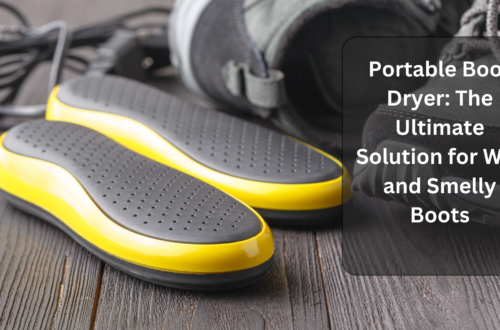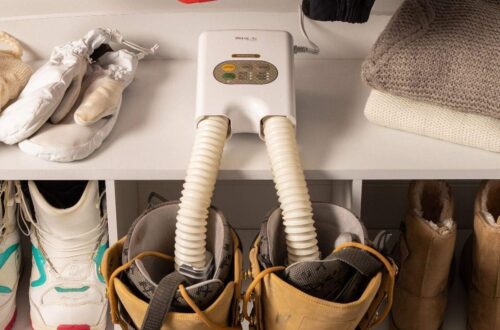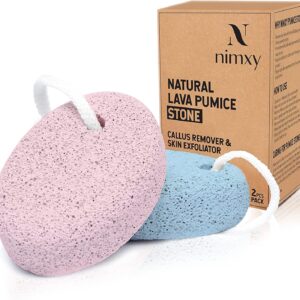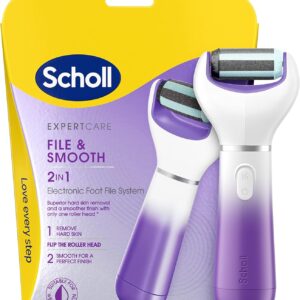Is a Pumice Stone Better Than a Foot File? A Comparison of Two Popular Foot Care Tools
Are you tired of dealing with rough, callused feet? It’s a common problem that many of us face, but luckily there are plenty of tools such as pumice stones and Foot files out there to help smooth things out.
But which one is better?
In this article, we’ll take a closer look at both options and help you decide which one is right for you.
First, let’s talk about pumice stones. These natural volcanic stones have been used for centuries to exfoliate and smooth rough skin. They work by gently scrubbing away dead skin cells, leaving your feet feeling soft and smooth. Pumice stones are easy to use and can be found at most drugstores and beauty supply stores. But are they really better than foot files?
Understanding Pumice Stones
Origins and Composition
Pumice stones are a natural volcanic rock formed from lava that has rapidly cooled and solidified. They are typically light in weight and have a porous texture. Pumice stones are commonly found in regions with volcanic activity, such as Italy, Turkey, and Greece.
The composition of pumice stones makes them an ideal tool for exfoliating rough skin on your feet. They are made up of tiny air pockets that allow them to float in water and gently remove dead skin cells without causing irritation.
Mechanism of Action
When using a pumice stone, it is important to wet the stone and your feet first. This will help to soften the skin and make it easier to remove dead skin cells. Gently rub the pumice stone in a circular motion over the rough areas of your feet, applying light pressure. Rinse your feet and the stone frequently during the process.
Pumice stones work by physically removing the outer layer of dead skin cells from your feet. This helps to smooth out rough patches and calluses, leaving your feet feeling soft and smooth. They are a natural and effective alternative to foot files, which can be harsh on your skin if not used properly.
In summary, pumice stones are a natural and effective tool for exfoliating rough skin on your feet. Their unique composition and mechanism of action make them a popular choice for those looking to achieve soft and smooth feet.
Exploring Foot Files
When it comes to maintaining smooth and soft feet, using a foot file is a popular choice. Foot files are designed to remove rough and dry skin from your feet, leaving them feeling smooth and refreshed. However, with so many different types of foot files available, it can be challenging to know which one is the best for you.
Types of Foot Files
There are three main types of foot files: metal, glass, and electric. Metal foot files are typically made of stainless steel and have a rough surface that is designed to file away rough skin. Glass foot files are made of tempered glass and have a fine-grit surface that is ideal for smoothing out rough patches. Electric foot files, on the other hand, use a rotating head to buff away rough skin.
Metal foot files are durable and long-lasting, but they can be harsh on the skin if not used correctly. Glass foot files are gentle and easy to use, but they are not as durable as metal files. Electric foot files are quick and efficient, but they can be expensive and require regular battery replacements.
Usage and Effectiveness
To use a foot file, start by soaking your feet in warm water for 10-15 minutes to soften the skin. Then, gently file away any rough or dry skin using the foot file of your choice. Be sure to use light pressure and avoid filing the same area for too long to prevent damaging the skin.
When it comes to effectiveness, foot files can be a great way to keep your feet looking and feeling smooth. However, it’s important to note that foot files are not a cure for foot problems such as calluses or corns. If you have severe foot issues, it’s best to consult a podiatrist for professional treatment.
In conclusion, foot files can be an effective tool for maintaining smooth and soft feet. However, it’s essential to choose the right type of foot file for your needs and use it correctly to avoid damaging your skin.
Comparative Analysis
When it comes to removing dead skin from your feet, you have two options: a pumice stone or a foot file. Both tools are effective, but they have their pros and cons. In this section, we’ll compare the efficiency and results, safety and skin health, and ease of use and maintenance of pumice stones and foot files.
Efficiency and Results
Pumice stones and foot files are both effective at removing dead skin from your feet, but they work in different ways. Pumice stones are made from volcanic rock and have a rough, porous surface that gently buffs away dead skin. Foot files, on the other hand, have a flat, abrasive surface that scrapes away dead skin.
Pumice stones are better for people with sensitive skin or those who want a gentler exfoliation. Foot files are better for people with thicker, tougher skin or those who want a more aggressive exfoliation.
Safety and Skin Health
Both pumice stones and foot files can be safe to use if used correctly. However, pumice stones are generally considered safer because they are less likely to cause cuts or abrasions. Foot files can be too harsh if used incorrectly, which can lead to skin damage and infections.
In terms of skin health, pumice stones are better for people with dry, cracked skin because they help to remove dead skin and promote cell turnover. Foot files can be too harsh for people with dry skin and can cause further damage.
Ease of Use and Maintenance
Pumice stones are easy to use and maintain. Simply wet the stone and gently rub it over your feet in a circular motion. After use, rinse the stone with water and let it air dry.
Foot files require a bit more effort to use and maintain. You need to use the file in a back-and-forth motion to remove dead skin. After use, you need to clean the file with soap and water and let it air dry.
In terms of maintenance, pumice stones are easier to clean and don’t require as much upkeep as foot files.
Overall, both pumice stones and foot files are effective at removing dead skin from your feet. However, the choice between the two comes down to personal preference and skin type. If you have sensitive skin or dry, cracked skin, a pumice stone may be the better option. If you have thicker, tougher skin, a foot file may be the better option.
Conclusion
In the end, whether a pumice stone or a foot file is better for you depends on your personal preference and needs. Both tools are effective at removing dead skin and calluses from your feet.
If you have sensitive skin or are prone to cuts and scrapes, a pumice stone may be the better option as it is gentler on the skin. However, if you have thicker calluses or prefer a more aggressive exfoliation, a foot file may be more suitable.
It is important to note that whichever tool you choose, it is essential to use it correctly and safely. Always follow the instructions provided and avoid over-exfoliating or using too much pressure on your skin.
Overall, both a pumice stone and a foot file can be effective tools for maintaining smooth and healthy feet. It is up to you to decide which one works best for you and your needs.

You May Also Like

Best Electric Foot File of 2023: Smooth and Soft Feet Guaranteed
11 August 2023
Portable Boot Dryer: The Ultimate Solution for Wet and Smelly Boots
14 November 2023


